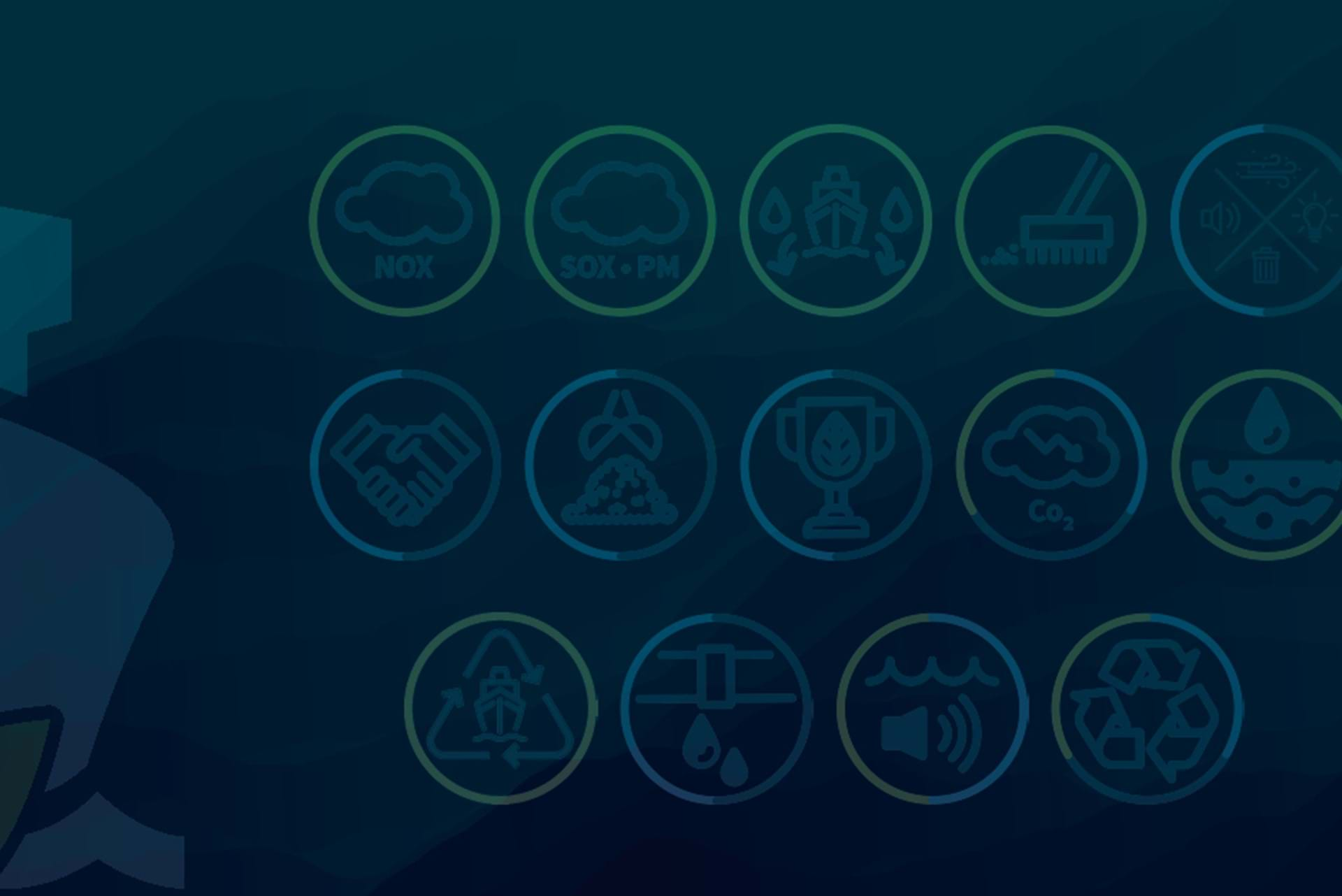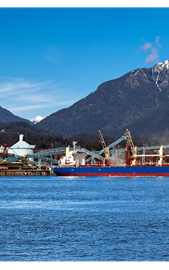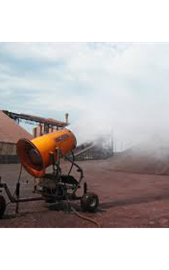
Broader Scope, Tougher Criteria Over 15 Years
CommitmentGreen Marine guides waves of environmental change by regularly augmenting objectives
As Green Marine celebrates its 15th year, the organization recognizes that one of its biggest challenges is still ahead with the need to decarbonize maritime transportation by 2050. “It’s an incredibly ambitious goal, but critically important,” says David Bolduc, Green Marine’s President.
While decarbonization wasn’t yet a major topic when Green Marine was first being discussed in 2005, minimizing greenhouse gases (GHG) and other air emissions has always been a priority.
I remember thinking during the early meetings before the program’s launch: we cannot do this properly without setting reduction targets right from the start.
Staying true to its mission of going above and beyond environmental regulations, the program’s GHG reduction targets have repeatedly been raised over the years.
AMBITIOUS TARGETS
“For ship owners, we initially set Level 5 – the program’s highest criteria – at a 1.5% annual average GHG intensity rate of reduction, but a decade later increased this to 2% for the 2017 reporting,” Bolduc notes. “We’re now requiring a 2.4% annual GHG reduction for 2022 reporting at Level 5, because it’s the necessary pace to achieve decarbonization by 2050.”
The air quality performance indicators have evolved in other aspects. While initially focused on SOx and NOx emissions, the criteria eventually were expanded to include particulate matter.
On the land side, Green Marine figured prominently in standardizing the approach to measuring port emissions through close collaboration with Transport Canada. “We encouraged several Canadian ports to try the agency’s new Port Emissions Inventory Tool, or PEIT for short, when it first emerged, knowing the industry would ultimately benefit from a common methodology for assessing GHG at ports,” Bolduc says.
“We obtained an exclusive license from Transport Canada in 2016 so that our port membership in Canada and the United States could make use of it free of charge,” he adds. “Before its dissemination, the Port of New Orleans agreed to carry out a pilot project to ensure that it would work well for Green Marine ports on both sides of the border.”

By providing access to the PEIT, Green Marine helped its participating ports to achieve the Level 3 GHG requirement of having a GHG / air emissions inventory, which can be costly to set up and maintain independently.
Transport Canada has since transferred the management of the PEIT to Environment and Climate Change Canada.
COMPREHENSIVE APPROACHES
Aquatic invasive species (AIS) was the No. 1 priority for ship owners when Green Marine started out in the Great Lakes and St. Lawrence region. “We focused on creating a performance indicator that both encouraged and rewarded those who went above and beyond regulations, especially when it came to implementing new preventive measures and systems on board,” Bolduc recalls. “Eventually, the international convention included an obligation to install ballast water treatment systems on board and we gradually expanded the focus of our performance indicator to also include the issue of biofouling.”
Overall, the priorities established by Green Marine – and more recently, Green Marine Europe – do address similar concerns as when the program was launched 15 years ago.


Through our 14 performance indicators, we’re dealing with the common issues of air, soil, and water quality, biodiversity, as well as more recently with community relations.
“However, the regional advisory committees will point out geographic differences and, most importantly, give us a chance to speak in smaller groups with members in person or through videoconferencing as the organization becomes larger,” Bolduc adds.
Most Green Marine performance indicators have a long-term trajectory for continual improvement, with the bar steadily raised above regulations. However, the cargo residues indicator for ship owners was set aside in 2016 when it became clear that participants had done everything possible. “We retired this indicator when we saw that all the relevant participants were at or near Level 5 and similar regulations were coming into effect,” Bolduc explains.
NEWER CHALLENGES
When Transport Canada identified underwater noise as an emerging issue, it called upon Green Marine to conduct a survey of the existing initiatives in Canada and globally to measure and reduce underwater noise. The overview also informed the development of a performance indicator on underwater noise for all of Green Marine’s ship owners and ports operating in salt waters.
“Our West Coast advisory committee initially regarded this as a priority based on the expertise of WWF-Canada, one of Green Marine’s most engaged supporters,” Bolduc says. “Interestingly, it became a key issue a couple of years later for the Gulf of St. Lawrence and Atlantic Canada participants who were already preparing to deal with it as part of our program.”

Green Marine’s ports encouraged the program to work ahead of the Environmental, Social and Corporate Governance (ESG) curve by requesting that community relations be made into a stand-alone performance indicator with its criteria separate from community impacts such as noise, dust and light.
I can't think of any other certification program that is doing this in the shipping industry.
It wasn’t easy. “All our previous indicators focused on environmental improvements that could be measured using existing technologies,” explains Green Marine Program Manager Véronique Trudeau. “In this case, we had to call upon experts in the Social Sciences to help us figure out how to determine progress in communicating more effectively, starting with a clear definition of what we actually meant by a port community.”
Another performance indicator in the works for the end of this year will outline the steps that ports and terminals can take to safeguard and enhance aquatic ecosystems. Meanwhile, shipyards will soon have their own criteria rather than following the performance indicators originally established for terminals.
“I can see us continuing to make the criteria more specific to each type of participant, as we’re now doing with shipyards, but otherwise I think we need to resist the urge to develop too many performance indicators,” Bolduc says. “We have a program that deals with the major issues without overwhelming our participants.”
SMOOTHER COMMUNICATIONS
Green Marine has made significant investments this year to make it easier for its participants to evaluate their progress for annual certification, as well as to make those efforts more widely known through a revamped website.
“The initial Smart Guide tool launched in 2020 worked well overall, but there were some glitches,” relates Manon Lanthier, Green Marine’s Communications Manager. “The new Smart Guide that will be rolled out next year will be more user-friendly and adaptable to additional requirements, such as the new criteria for shipyards.”
Bolduc applauds the more than 440 members – participants, supporters, partners, and maritime associations – for their collaborative approach over the past 15 years toward making North America’s maritime industry a lot greener than it already was compared to other transportation modes in 2007.
Our participants have achieved a lot to date and continue to work actively towards greater sustainability on key fronts.
“We have also developed a mutual trust with our supporters as we’ve worked on mutual goals together, and now perhaps invite them even earlier to discussions,” he adds. “At the same time, our rapidly increasing number of partners reflects how vital environmental solutions have become to our industry, and it’s their innovation that will help us to find the necessary solutions.”
Bolduc vows to continue to review the program to keep it above and beyond global regulations over the next 15 challenging years as a rigorous and transparent certification process to keep both Green Marine in North America and Green Marine Europe on the front wave of sustainable progress.
